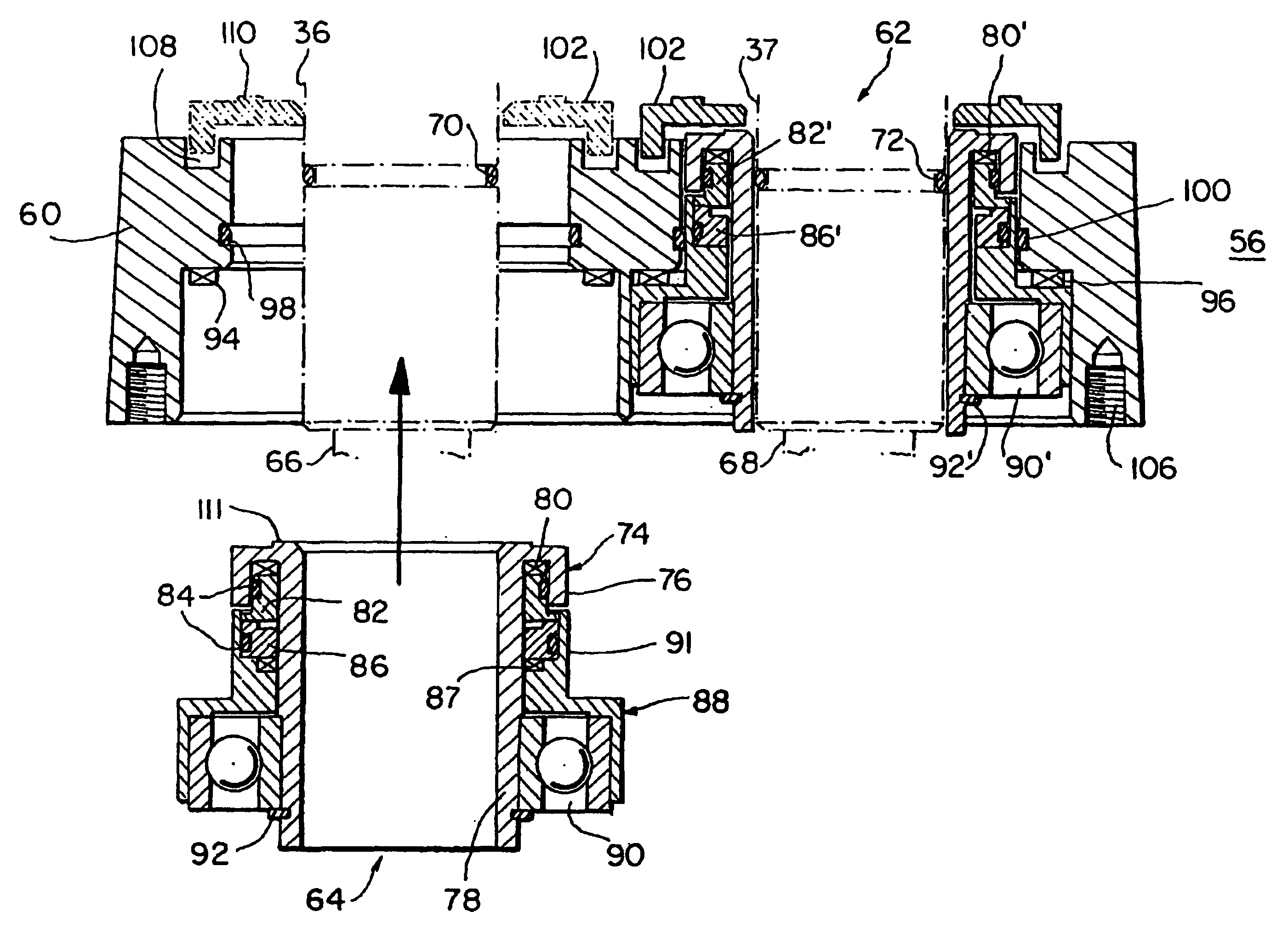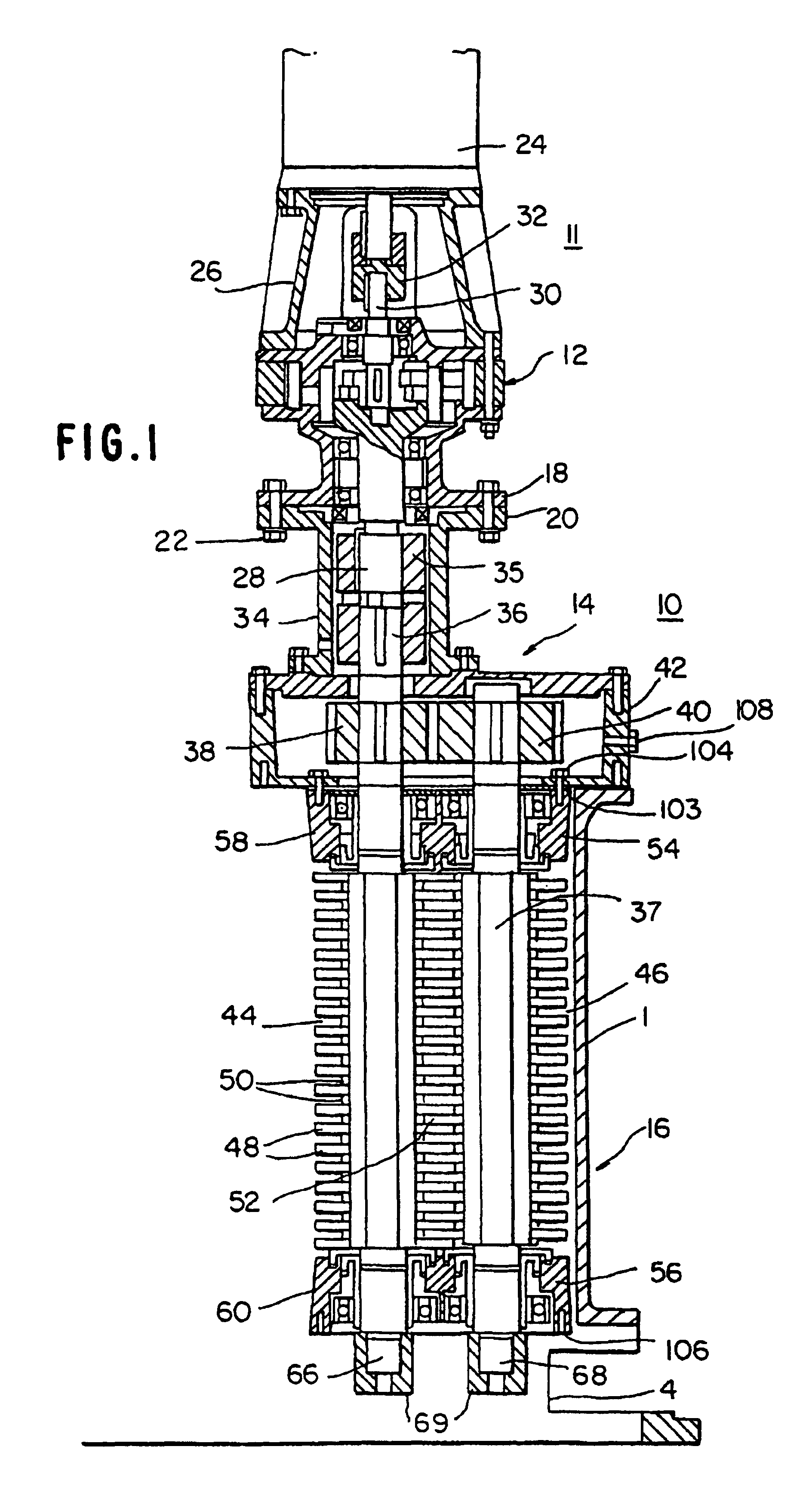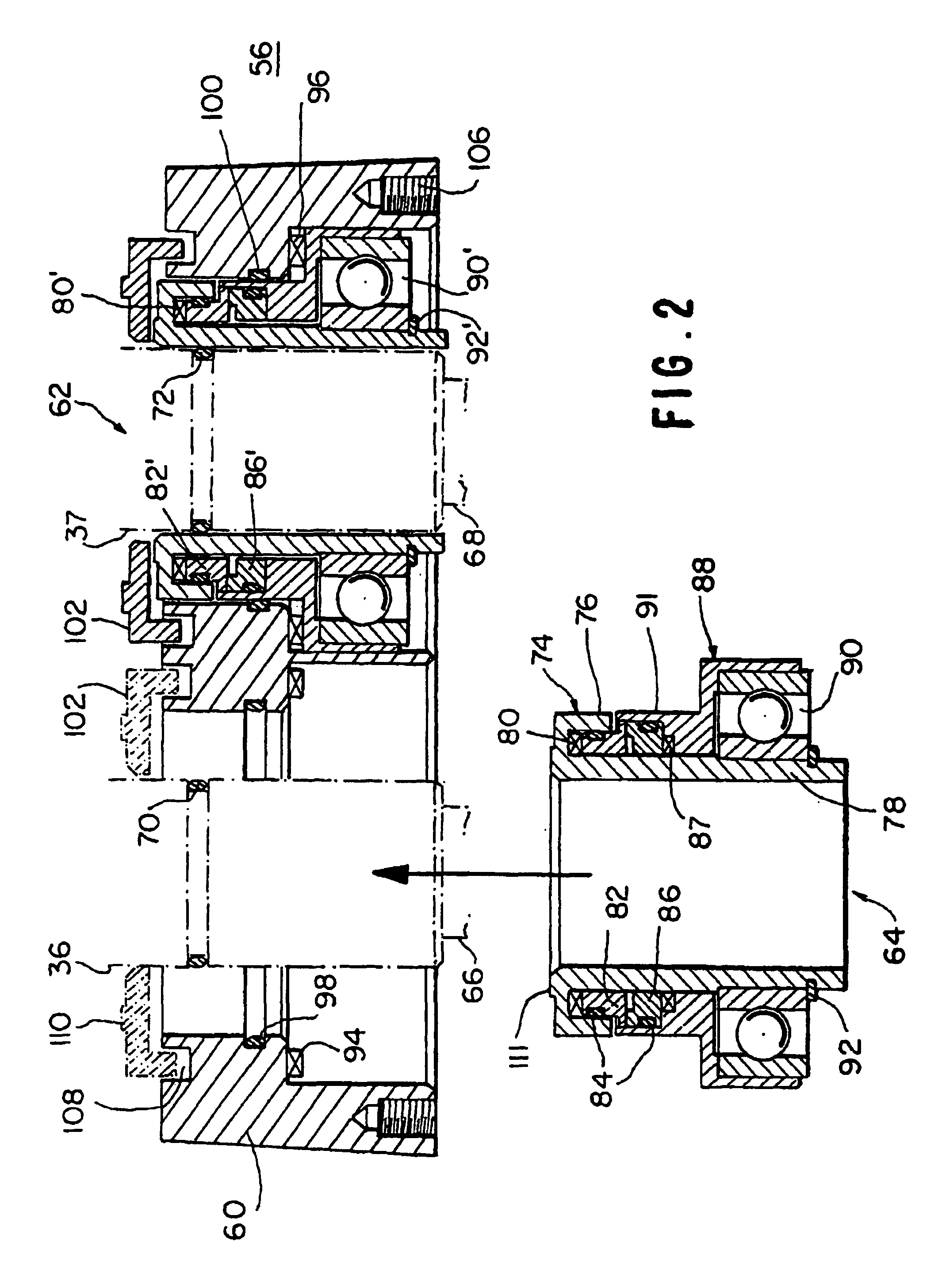Solid waste comminutor
a comminutor and waste technology, applied in the direction of shafts and bearings, cocoa, bearing components, etc., can solve the problems of affecting other critical components of the device, bearing failure, and scalding up the cutter stack, so as to reduce the stress on the shaft, maximum cutting efficiency, and fast installation
- Summary
- Abstract
- Description
- Claims
- Application Information
AI Technical Summary
Benefits of technology
Problems solved by technology
Method used
Image
Examples
Embodiment Construction
[0024]Referring now to FIG. 1, a cut-away side view of the overall system is depicted. In FIG. 1 the housing 1 has an inlet and outlet, not illustrated. At the bottom of the housing, a pair of access cut-outs 4 are provided to permit stack tightening, to be described herein, without disassembly of the device. The unit employs, three essential subsystems, which comprise a complete comminution apparatus 10. These are a drive subsystem 11 with a motor 24 and speed reducer 12, a gearing subsystem 14, and a cutting subsystem 16. The housing 26 for the speed reducer 12 is mounted to the gear and cutter system 14, 16 by a pair of conforming flange elements 18, 20, which are clamped together by means of bolts 22. The motor is topically an electric drive motor 24, the details of which need not be discussed in detail. It will be recognized by those skilled that a suitable motor and drive system can be employed consistent with the scope of intended use. The speed reducer is contained in a hous...
PUM
 Login to view more
Login to view more Abstract
Description
Claims
Application Information
 Login to view more
Login to view more - R&D Engineer
- R&D Manager
- IP Professional
- Industry Leading Data Capabilities
- Powerful AI technology
- Patent DNA Extraction
Browse by: Latest US Patents, China's latest patents, Technical Efficacy Thesaurus, Application Domain, Technology Topic.
© 2024 PatSnap. All rights reserved.Legal|Privacy policy|Modern Slavery Act Transparency Statement|Sitemap



